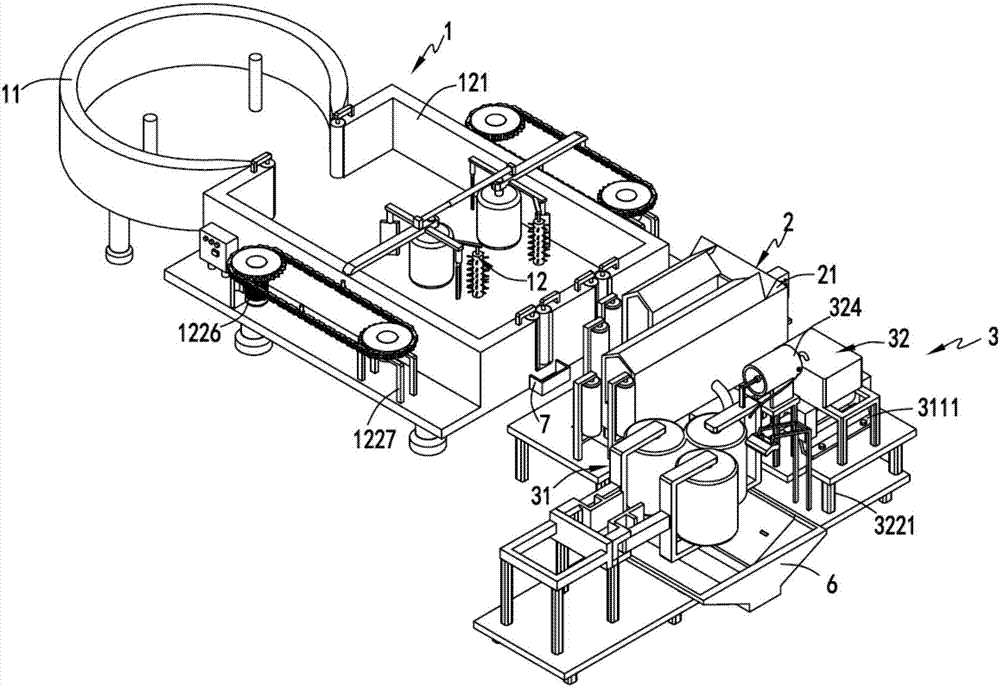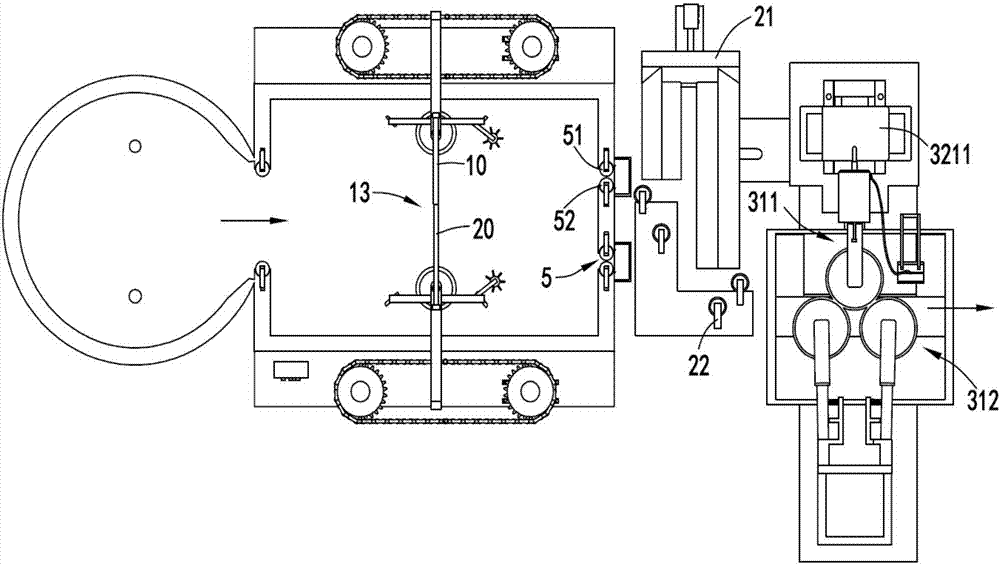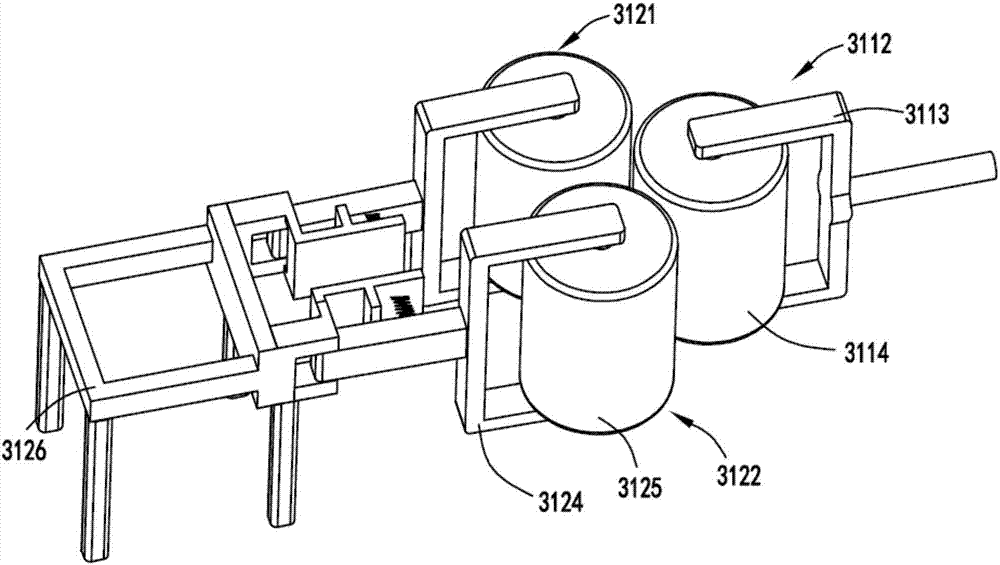Textile fabric aftertreatment production line
A technology for textile fabrics and production lines, applied in the field of post-processing production lines for textile fabrics, can solve the problems of removing self-adhesive, poor desizing effect, uneven output of fabrics, etc., and achieves the effect of promoting decomposition, promoting absorption, and high processing efficiency
- Summary
- Abstract
- Description
- Claims
- Application Information
AI Technical Summary
Problems solved by technology
Method used
Image
Examples
Embodiment 1
[0062] Such as figure 1 , figure 2 , image 3 , Figure 4 , Figure 5 , Image 6 , Figure 7 , Figure 8 , Figure 9 , Figure 10 with Figure 11 Shown, a kind of textile fabric aftertreatment production line comprises desizing part 1, and described desizing part 1 comprises the impregnating material pool 11 that is used for releasing amylase and fabric to be desized and is arranged on the soaking material pool 11 rear end. A sorting mechanism 12 for sorting out fabrics transported backwards from the soaking pool 11;
[0063] Steaming part 2, described steaming part 2 is arranged on the rear end of finishing mechanism 12, and this steaming part 2 is used for carrying out steaming while transporting the lining that finishes finishing finishing through finishing mechanism 12;
[0064] The rubbing and washing part 3, the rubbing and washing part 3 is arranged at the rear end of the steaming part 2, the rubbing and washing part 3 includes a rubbing mechanism 31 and a wa...
Embodiment 2
[0090] Such as figure 1 , figure 2 , image 3 , Figure 4 , Figure 5 , Image 6 , Figure 7 , Figure 8 , Figure 9 , Figure 10 with Figure 11 As shown, the components that are the same as or corresponding to those in the first embodiment adopt the reference numerals corresponding to the first embodiment. For the sake of simplicity, only the differences from the first embodiment are described below. The difference between the second embodiment and the first embodiment is that the steaming part 2 includes a steaming box 21, a plurality of guide rollers 22 arranged at the inlet end of the steaming box 21, the outlet end and the inside, and the steaming part 2 The box 21 is arranged in a U-shape.
[0091] Firstly, by arranging the steaming part 2, the cloth with amylase attached can promote the decomposition of amylase under the action of heat. In addition, by arranging the steaming box 21, it is set to a U-shape so that the cloth can be improved as much as possible...
Embodiment 3
[0093] Such as figure 1 , figure 2 , image 3 , Figure 4 , Figure 5 , Image 6 , Figure 7 , Figure 8 , Figure 9 , Figure 10 , Figure 11 Shown, a kind of post-processing production technology of textile fabric comprises the following processing steps:
[0094] a. Enzyme desizing process, soaking the fabric to be desized in amylase;
[0095] b. Finishing process, the textile fabric that has been soaked in amylase in step a and completed desizing is transported backwards, and the fabric is smoothed by two smoothing devices during the transmission process and removed during the smoothing process. Debris around the fabric;
[0096] c. steaming process, finishing smoothing and removing sundries in step b and carrying out steaming while transporting backwards;
[0097] d. Kneading and washing process, the steamed fabric in step c is transported and rubbed in two directions along the forward and reverse direction of the fabric transmission direction to make the fab...
PUM
 Login to View More
Login to View More Abstract
Description
Claims
Application Information
 Login to View More
Login to View More - R&D
- Intellectual Property
- Life Sciences
- Materials
- Tech Scout
- Unparalleled Data Quality
- Higher Quality Content
- 60% Fewer Hallucinations
Browse by: Latest US Patents, China's latest patents, Technical Efficacy Thesaurus, Application Domain, Technology Topic, Popular Technical Reports.
© 2025 PatSnap. All rights reserved.Legal|Privacy policy|Modern Slavery Act Transparency Statement|Sitemap|About US| Contact US: help@patsnap.com



